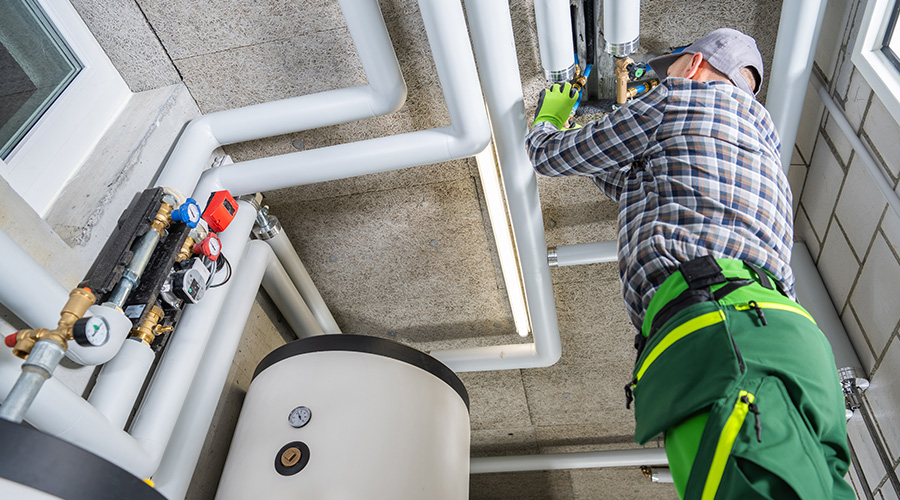Smart Grid's Rapid Deployment Brings Perks
The Smart Grid is coming to your door, in the form of "smart" meters that can tell you — and your utility — more about how and when you use power. To avoid speed bumps, facility managers can apply some early lessons learned while implementing this great technological leap.
Some of the Smart Grid hype sounds eerily like the projections and claims for electric deregulation in the 1990s. While phrases like "revolutionizing the energy landscape" may make you yawn, the change that's taking place is indeed both rapid and significant. Much of it is being spurred forward by billion-dollar grants to utilities under the American Recovery and Reinvestment Act, also known as the stimulus.
Since last year, millions of new meters have been installed. Of the roughly 180 million electromechanical electric meters in the U.S., 60 million are expected to become smart by 2020. Larger utilities (those with over 100,000 customers) are at the forefront of this movement, with the largest (e.g., PG&E in California) jumping in with both feet. Smaller utilities are taking a wait-and-see attitude.
By taking advantage of the expansion of broadband, low-cost computer chips and high-powered computers, utilities are moving their power systems from the analog age into the digital world. In place of the usual one-way distribution of power from generator to customer, with use measured in monthly increments, we are now seeing a two-way system in which information on power delivery and use is collected and posted in 15-minute intervals.
Much of this is taking place along the high-voltage transmission and distribution networks, but facility managers are now seeing it happen in their buildings' meter rooms — and, perhaps soon, in their electric bills.
Mechanical electric meters are from the adding machine age, while smart (also called "interval") meters have more in common withÊnetbook PCs. Instead of meter readers collecting information on clipboards or keypads, central computers communicate with meters through power lines, the Web, over the air, or via other means, enabling a wide spectrum of electric rates and service options.
Smart meters read electricity use, power factor and other characteristics in near-real time and report it back to a central system at the utility. In so doing, electric rates that charge more during high grid peaks become possible, with a goal of encouraging users to cut demand so utilities don't have to build more generation. Alternatively, customers may be paid to cut load quickly, rather than being charged more if they don't. Such is the core of the many demand response programs now available to many medium-to-large power customers with interval meters.
Who Wins, Who Might Lose
With the cost of new generation rising rapidly, anything that can slow the rate of increase in systemwide demand at a lower cost is a win for all parties. But some customers may benefit more than others. For commercial power customers, the main perks fall into four categories:
- New rate options (e.g., time-of-use) that could lower overall cost for those with unusual usage patterns
- Participation in demand response and interruptible service programs
- Pinpoint causes of peak demand and ways to reduce it
- Identify and correct problems with equipment and operations that are wasting electricity.
At the residential consumer level, some of these options could appear in the form of electric rates tailored for off-peak charging of plug-in hybrid vehicles, and remotely controlled cycling of air conditioning systems during peak grid loads. At the commercial/industrial level, real-time receipt of the 15-minute interval meter data could be used to trigger automated energy management system actions to sequence variable speed fans, cycle electric hot water heaters, slowly dim lighting, and other demand reduction capabilities. When done gradually, such changes may not be noticed by occupants.
Some landlords are replacing their old kilowatt-hour (kWh) submeters with digital versions that allow them to charge more to tenants creating high peak demand, instead of — as is commonly the case — socializing that part of a building's electric bill among all tenants. A few tenants have found that such data may also be used to negotiate down the cost for after-hours services. Some submeters communicate using wireless methods, thereby cutting installation time and cost. All report back via a secure website accessible to anyone with an Internet connection and the password.
New Ways to Improve
Through collection and near real-time analysis of interval data, building and plant operators may realize new ways to understand how their facilities are running, while finding ways to improve operations and cut electric bills. For example, by charting after-hours interval data for his concert hall, one facility manager immediately realized that the night setback control for his electric heating system had failed. Others have used such data to keep tabs on how operating personnel are dispatching the lowest-cost chillers. A few have found ways to cut total costs by combining loads onto one account, or to find more competitive rates where retail electricity has been deregulated.
Related Topics:












